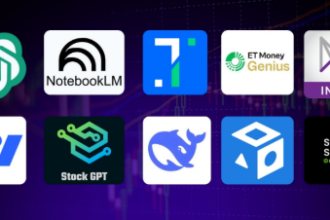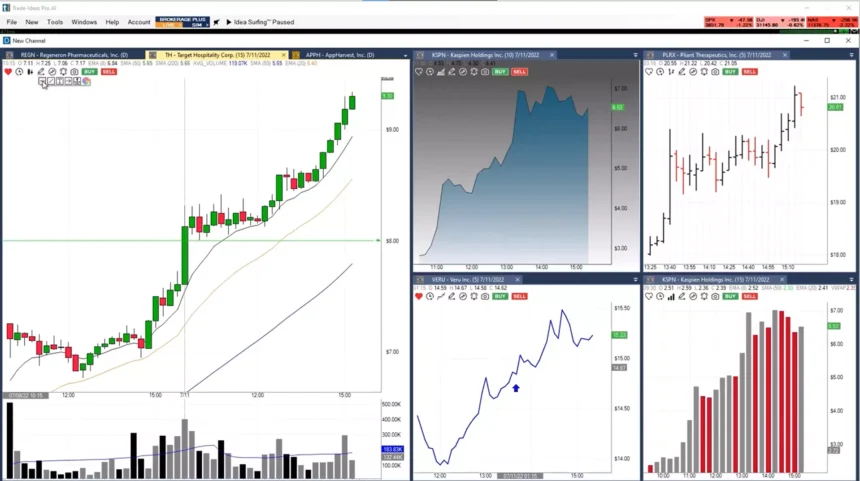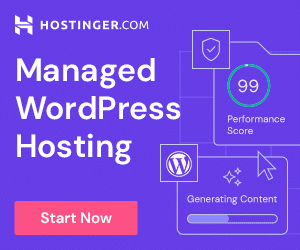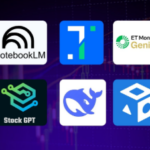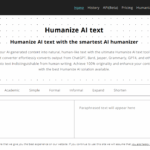In this article, I will discuss the best software for bus operations, which plays a crucial role in enhancing the efficiency and effectiveness of public transportation.
With features like real-time tracking, route optimization, and fleet management, these software solutions help transit agencies streamline operations, reduce costs, and provide better services to passengers, ensuring smooth and reliable transport systems.
Key Points & Best Software For Bus Operation List
| Software | Key Points |
|---|---|
| Ecolane | Cloud-based scheduling, real-time tracking, advanced reporting, and demand-response solutions. |
| Remix | Intelligent route planning, data-driven decisions, and integration with existing transit systems. |
| Optibus | AI-driven planning and optimization, supports scheduling, route design, and fleet management. |
| TripSpark | Flexible transit solutions, supports scheduling, dispatching, and fleet management. |
| QRyde | Mobility management platform for paratransit and demand-responsive transit systems. |
| TripMaster | Software for scheduling, dispatch, and fleet management, focused on small to medium operations. |
| Moovit MaaS | Multi-modal transportation platform, providing real-time data and route optimization. |
| Spare | Cloud-based platform for transit scheduling, real-time updates, and customer service management. |
| Amadeus | Travel technology platform that offers integrated booking, scheduling, and passenger management. |
| Conduent Transportation | Intelligent transportation systems for route optimization, real-time tracking, and analytics. |
| Trapeze | Comprehensive suite for fleet management, scheduling, and route optimization. |
| Via | On-demand transportation platform offering ride-sharing, route optimization, and fleet management. |
| Pantonium | Optimized scheduling and fleet management solutions for public transit and paratransit services. |
| Actionfigure | Route planning, scheduling, and dispatching tools with a focus on community transport. |
| CODICE PT | Public transport software with scheduling, dispatching, and real-time data analytics. |
| EZTransport | Flexible and affordable software for managing transportation logistics, scheduling, and dispatch. |
| TSO Mobile | Mobile app for scheduling, real-time tracking, and communication between drivers and dispatch. |
| Swarco | Intelligent transport systems with advanced traffic management and fleet coordination. |
| Ncrypted | Customizable software solutions for public transit, including booking and scheduling features. |
| AMCONSOFT | Software offering fleet tracking, route planning, and real-time analytics for transit operations. |
20 Best Software For Bus Operation
1.Ecolane
Ecolane is one of the most advanced cloud software designed for bus operations such as scheduling, dispatching and managing fleets. Besides, Ecolane allows for live tracking of buses, alteration of routes on-the-go and demand response solutions that would increase the operational efficiency of the software or company.
The full picture, however, shows that Ecolane is not for cutting costs unless easing some transit agencies emerge as the priority concern ,which it does with its simple user interface and its multiple options of modification.

In a circumstance where focusing on public accountability is a main concern, Ecolane is the best option for effective claims management as well as a complete overhaul of the public transport system impact on management.
Pros And Cons Ecolane
Pros:
- Ecolane being a cloud-based solution allows access from any location quite conveniently.
- Inclusive of regular route schedules as well as on-demand services.
- Enhanced fleet control and optimization with the help of tracking capabilities.
Cons:
- Some features are not easy to operate, hence training may be needed for employees.
- Quite costly for the smaller operators of transit business.
- Ecolane has limited support for international market, US being the major one.
- Lagging some users experience, during rush periods of usage.
2.Remix
Remix is an efficient software for bus operations which enables intelligent route and schedule planning. It makes logical use of data to improve and maximize the transit routes, assist in decision-making, and increase fleet productivity.

Remix is easy to connect with and adds value through real-time performance management while crossing operational silos. From the user’s perspective, it allows transit agencies to cut costs, enhance service quality, and create a better experience for operators and passengers alike.
Pros And Cons Remix
Pros:
- Applying high-impact optimizations to the proposed routes based on a data analysis.
- Providing an interface easy to understand for the users to operate.
- Making it possible to deploy the software without any direct reliance on other New mode transit systems.
- Includes embedded analytics which enables decision makers to leverage real time data.
- Provides an extendable platform that offers micromobility to mega-transportation networks.
Cons:
- For smaller public works transit entities may be too expensive.
- Certain features would allow to be much more tailored but are so limited.
- For the system to work at its utmost potential, a broadband connection is a necessity.
- It might take some while before the platform becomes natural for new users.
- Those who do not have technical background might find certain features more complex than others.
3.Optibus
Optibus is a new age software developed to maximize the functionality of bus operations. It employs the use of artificial intelligence tools to optimize routes and schedules as well as fleet management activities.

Optibus boosts the efficiency between transit agencies management and services delivery while decreasing the operational costs.
Including real time data analysis, forecast based maintenance and integration – this tool helps transit operators manage their operations, enhance customer’s value, and optimize fleet management for greater effectiveness.
Pros And Cons Optibus
Pros:
- Optimized routes using AI for efficient operation costs.
- Access to data and information which allows decisions to be made on the spot.
- Can be integrated to other transit systems and other software easily.
- Both the administrators and the drivers have easy to use interface for Optibus.
- Applicable for every kind of agency, regardless of the size of the agency.
Cons:
- Small transit agencies may find it difficult to afford.
- There is a learning curve for users who are not used to advanced scheduling tools.
- Support on some specialized transit requirements is limited.
- Only works properly when there’s a steady internet connection.
- A few users said that there was lag in the system during heavy usage.
4.TripSpark
TripSpark is a cutting-edge software solution dedicated to the management of various aspects of bus operations which includes scheduling, dispatching and fleet management. This software provides full control over the fixed and paratransit adoptions for deployment and increased cost efficiency.

Its time use tracking, causeway alteration, as well as client controlling options enable the agencies to provide accurate and dependable services at their desired time. Because it is simple to use while possessing strong analysis tools this program works great in both large and small transits equally.
Pros And Cons TripSpark
Pros:
- Both fixed flexible and route demand/responsive scheduling can be achieved.
- Simple interface that is understood and used with little effort by the members of staff.
- Incorporates all aspects of fleet management to maximize productivity and savings.
- Better enhancement of service through real-time tracking of passengers and reporting.
Cons:
- It can be expensive for small agencies having small pockets.
- Some clients have mentioned slow responses from customer support.
- Partial integration with other software applications is available in some cases.
- Significant time may be needed for the completion of full scale deployment.
- Bug issues might tell you otherwise, such as when updates are launched.
5.QRyde
QRyde is a unique software designed for bus business, especially paratransit operations and demand response services. The application provides real-time scheduling, dispatching, and location tracking which helps transit agencies make better management of routes and fleets.
Automated modules for booking, billing, and reporting of passengers are also supported by QRyde, allowing for reduction of operational costs.

Thanks to the reliable and easy-to-use interface, active QRyde’s operation optimizes business processes, increases efficiency in servicing clients, and provides for better overall operational control of public transport systems.
Pros And Cons QRyde
Pros:
- Specifically designed for use in paratransit and demand-response services.
- A user-friendly tool that reduces the complexity of both scheduling and dispatching operations.
- The enhancement of fleet management is possible due to the vehicle’s realtime location tracing.
- Automated systems for booking and billing passengers aimed at improving the efficiency of business processes.
- Includes personalized modules and instruments for creating reports and making decisions.
Cons:
- May not work for the bulk transfer of passengers through fixed routing.
- Only a few of the company’s customer service staff are available to help users after business hours.
- Some transit agencies with limited budget range may find it expensive to use.
- Designed to be used under adequate internet supply.
- The modules integration with other outdated system can be complicated.
6.TripMaster
TripMaster is a multipurpose software~ – designed to improve bus operations particularly for small to medium sized transit authorities. It enables operators to manage schedules, disptach, and even their fleet all in real-time for better efficiency and service reliability.

Other features of the software tool such as billing, passenger tracking, and route management cut down the operational cost whilst improving the service.
The user-friendly interface and customizable options make it a great solution for efficient management of transportation systems.
Pros And Cons TripMaster
Pros:
- Offers paratransit and fixed route scheduling.
- The fleet management is enhanced with GPS and on screen maps tracking.
- The user applications and the program’s interface are brought graphical interfaces improving the dispatch and the operations.
- Management of passengers and business intelligence reporting tools.
- Provide configurable and easy-to-use solutions for various bus transit.
Cons:
- Can be unaffordable for small transit agencies or other organizations.
- Basic version of the software lacks advanced features.
- During installation, some users have problems at the beginning.
- The time taken to respond to customers on weekends is longer than the time taken on weekdays.
- Extra training might be needed before staffs can fully utilize the package.
7.Moovit MaaS
Moovit MaaS unifies all the necessary parts required for the effective operation of bus operations and Management of Public Transport. Moovit MaaS provides seamless integration of real time information, addressing of routes as well as multi-modality in the quest to optimize operations.

The service allows passengers to get real time information on transport vehicles, routing of vehicles as well as provision of basic transport analytics to the agencies responsible for the transport. Moovit MaaS’s simple interface and wide reach allow enhancement of service reliability, cost savings as well as better commuting experience for passengers.
Pros And Cons Moovit MaaS
Pros:
- Improved passenger experience through the use of GPS for tracking and constant announcements while in transit.
- Offers a flexible platform perfect for small and large sized transit systems.
- Integrated business intelligence solutions that provides accurate analytics for better and effective decision making.
Cons:
- May not offer the required flexibility for particular transitions which vary in volume across a region.
- Perhaps too expensive for smaller public transit providers who are not well funded.
- The full capabilities of the scope would not be achieved in the absence of internet connection.
- However all features may not run well with older versions of the system.
8.Spare
Spare is a new software system focused on bus operations which includes on-demand and shared transportation services. The software enables real time scheduling, dynamic route creation and management enabling public transport service providers to operate more efficiently and save costs.

Spare’s solution is a platform that allows TV operators to do better as it has a myriad of features like real time updates, handling of passengers and also a database that gives them up to date market statistics. It helps to improve service provision and management of resources to enhance public transport services.
Pros And Cons Spare
Pros:
- It enables both, demand-responsive and shared ride services to be provided.
- Efficient real time order fulfillment and route planning.
- User-friendly interface for administrators and drivers as well.
- Optional functions which provide variety for different types of transit services.
- Lay down resources more suitably by applying more insightful and predictive analytical models.
Cons:
- Smaller transit agencies can find it pricey.
- Additional User training will be needed for some of the features.
- Operates as a stand-alone application having limited compatibility with some computer software.
- Sometimes gets disconnected from the real time tracking program.
- This might not be able cater for all specialized transit requirements.
9.Amadeus
Amadeus ‘s booking engine for transportation services is state of the art, allowing for the entire management of bus reservations, scheduling, and even fleet management. It has integrated real time data capabilities that assist transit agencies in route optimization and operational efficiency.

Amadeus includes automated ticketing and passenger management allowing for large fleet management with minimal logistical difficulties. It is a one stop solution for enterprises of any scale because it increases service dependability while cutting operational expenses for the public transport provider.
Pros And Cons Amadeus
Pros:
- Tools for reservation, planning, and fleet management which are comprehensive in scope.
- Efficient operations through route optimization and tracking.
- Has the ability to work in tandem with multiple transition and payment systems.
- Has different types of custom feature for various types of transit service.
- Ideal for both large scale and small scale operations and is easily expandable.
Cons:
- Cost is somewhat exorbitant for smaller agencies especially those on a fixed budget.
- It requires training and time for a new user to get accustomed to it.
- Customer support waiting time might vary between low traffic and rush hour.
- Some specialized parts of the transit which are catered for are not as flexible.
- For the full functionality, a stable internet connection is a must.
10.Conduent Transportation
Conduent Transportation has a mature software for bus operations with a special emphasis on bus fleet management, route planning and bus tracking. Integrated in the system are scheduling, dispatching and data analysis that assist transit authorities enhance their operational performance and minimize costs.

The system is able to accommodate services that have both fixed routes and those that are demand responsive which improves service coverage and delivery. Conduent experts’ tools improve the quality of decision making, on-time working processes, and give information and insights for more effective public transport management.
Pros And Cons Conduent Transportation
Pros:
- Implementation of tools for efficient fleet control.
- Monitoring and reporting of relevant information for improved decision-making.
- Can offer fixed-route and on-demand services at the same time.
- Includes features that various transit agencies may require.
- Adaptable solution capable of evolving with the expanding transport networks.
Cons:
- May prove too costly for smaller public transport operators.
- The time taken to configure and link all components at the outset.
- Other users claimed that new learners have a hard time to master the system.
- Very little provision is made for non-U.S. overseas business.
- Normal operational functions are interrupted by technical difficulties in new system versions.
11.Trapeze
Trapeze Software Unified, is a product for bus business models which includes a package of tools including a scheduler, dispatcher, and even fleet management in the context of a whole organization.
It have real-time bus registration, route designing and even passenger registration, so it allows to order transit agencies to modernize its work and increase performance indicators.

It allows to operate both the fixed-routes and the demand-response services with an analytics to make right decisions. The solution allows to expand business possibilities of urban transport by managing service reliability, reducing cost, and automating interactions altogether.
Pros And Cons Trapeze
Pros:
- Provides end to end solutions for scheduling and fleet control.
- The supervision of operational activities is assisted with real-time vehicle tracking.
- Both fixed route and demand, responsive transit services are covered.
- Provides reporting and analytics that enable better decisions to be made.
- Flexible functionalities which meet customized requirements of transit agencies.
Cons:
- The set of services is quite expensive, meaning that such services won’t be available for smaller agencies.
- More than few users complain about difficult and lengthy process of setting or integrating.
- There can be technical problems from time to time with system performance.
- Staff may need more training in order to make full use of its features.
- There is also insignificant mobile application when compared with other platforms.
12.Via
Via is software that is used in operations of buses, mainly for on demand and shared transport services. It boasts of sophisticated route planning, as well, real-time scheduling and fleet management tools.

The Via platform is designed to provide public transport agencies with flexible and scalable solutions that enhance the reliability of service and the quality of experience for the customers. With Location tracking and data analytics at its disposal, it helps the operators take quick and useful decisions, increasing efficiency and saving money.
Pros And Cons Via
Pros:
- Provides both ride-sharing and flexible-scheduled services via a single mobile application.
- Uses Automatic Vehicle Location technology for efficient real-time service.
- Provides effective interoperability with other transport networks and mobile apps.
- Cost-effective and adaptable system design for numerous types of transportation services.
- Improves service delivery to clients by designing user-friendly mobile applications.
Cons:
- Might be expensive for smaller transit operators who have lower budgets.
- It is known that certain users encounter problems while configuring the system.
- It provides full-availability mode of specific features only with mobile and network connectivity.
- In some parts of the world there is lack of coverage for advanced transit services.
- Advanced feature settings may require supplementary training before use.
13.Pantonium
Pantonium is meant to optimize the fleet operations of bus operations, particularly for paratransit and demand-response services. It also helps in scheduling, route planning, and fleet supervision in real time while cutting down costs.

Real-time features such as dynamic dispatching, passenger management, and analytics ensure delivery of services at the right time. The platform assists agencies in providing efficient, flexible and cheaper transport solutions.
Pros And Cons Pantonium
Pros:
- It facilitates better management of demand and schedule planning for both flexible and pre-determined services.
- It allows tracking for better management of fleet operations.
- Customizable platform to match different requirements of various transit agencies.
- Integrated mobile application for passengers as well as drivers.
- Service and cost efficiency’s improvement is fostered by data analysis provided to the management.
Cons:
- It is not cost effective for small transport agencies.
- Setting the system up and customizing it will require time and effort for the best output.
- Internet is needed for full operational capacities.
- Difficulty in integration with older systems and even some third party systems.
- There may be technical glitches regarding system updates or the performance of the system.
14.Actionfigure
Actionfigure focuses on community transit and fleet management and has developed a solution which is all-encompassing software for bus operations. It provides instruments in relation to efficient route planning, scheduling and dispatching that in turn assists transit agencies in streamlining their operations and improving service provision overall.

Supported by features such as data analytics, automated report generation and passenger tracking, Actionfigure can enable resource and decision-making better than before. Its interface is easy to navigate which enhances reliability at a minimal cost which makes it ideal for integration into public transportation systems.
Pros And Cons Actionfigure
Pros:
- It is an easy-to-use interface that reduces the complexity of scheduling and dispatch.
- It enables stronger fleet management thanks to geolocation of vehicles.
- It can be tailored to fit the exact requirements of various transit services.
- It also offers a range of reporting tools for effective data analysis.
- Both fixed-route transportation and on-demand transportation are able to be supported.
Cons:
- Lesser features on standalone systems compared to an integrated comprehensive system.
- The cost can be quite high for small transit authorities.
- Troubles at the beginning of the engagement, for instance during 1st time set up for some users.
- It relies on net access for getting the information in real time.
- Better and advanced problems may require support but could take longer time frame.
15.CODICE PT
CODICE PT is a powerful software solution for bus operations, designed to optimize fleet management, scheduling, and route planning. It offers real-time tracking, dynamic dispatching, and passenger management features to enhance operational efficiency.

With its robust analytics tools, CODICE PT helps transit agencies improve decision-making, reduce costs, and ensure timely service delivery. Its customizable platform is ideal for managing both fixed-route and demand-responsive services in public transportation systems.
Pros And Cons CODICE PT
Pros:
- Provides great functionality regarding route optimization and fleet supervision.
- Configurable software platform designed for public transportation system operatives.
- Operational effectiveness is enhanced through the presence of tracking tools and monitoring tools in real time.
- Allows connection to different transportation systems and mobile applications.
- Extensive reports and analysis for effective management and planning processes.
Cons:
- High expenditures at the start stage of establishment, particularly for smaller agencies.
- Some beginners complain that the interface is not user-friendly.
- Full use of the system requires a stable Internet connection.
- Integration with the existing systems might take some time.
- For customers who works on phasic work schedule, no sufficient customer support during low work hours.
16.EZTransport
EZTransport is a powerful software solution tailored for bus operations that has tools for scheduling, dispatching, and fleet management. It enables an organization to enjoy real-time monitoring, route planning, and passengers control so as to enhance the performance of the functions and minimize costs.

Such functionalities as automated reporting and data mining assists transit agencies with the ability to make decisions, provide good service, and keep all operations in terms of cost and time reasonable. As a software focused for large and small transit perations , it is easy to use.
Pros And Cons EZTransport
Pros:
- Ordering and dispatching has never been easier.
- The program allows monitoring of the fleet’s deployment in real Jim truly undimmed veneration of Peters’s mind the advancing approach to globalization.
- There’s no need for complicated training as the system is easy to learn and use for both drivers and administrators.
- Both fixed-route and demand-responsive services are supported.
- Set of adjustable options focused on different transit agencies functions.
Cons:
- For smaller transit operations, it can be an expensive option.
- A few old or third-party systems have limited integration capabilities.
- Some challenges during the initial setup and configuration were experienced by some users.
- Internet connection is a fundamental need in providing the service.
- Less-developed systems are often weak in some of the features, which more sophisticated systems would include as standard features.
17.TSO Mobile
TSO Mobile is a bus management software that allows tracking and scheduling of buses as well as managing the fleet in real time. It makes communication between drivers and dispatchers easy, so the service runs smoothly and on time.

With the help of TSO Mobile, passengers can receive notifications about their trips, whereas the application’s user-friendly interface, data analytics and reporting tools assist in making decisions. TSO Mobile is designed for both fixed route and demand responsive services, and assists transit agencies in resource allocation, cost cutting and improving service standards.
Pros And Cons TSO Mobile
Pros:
- Enables efficacy for real time visibility and fleet supervision.
- Its interface allows easy navigation and operation of systems.
- Caters for fixed route as well as demand responsive operations.
- Works smoothly with operational transport systems already in place.
- Has good reporting and decision support for better services.
Cons:
- Can be costly for small transit agencies.
- A good internet connection is crucial to use all the features.
- Some users claim it takes time to adjust to the initial use.
- Few functionalities have very low customizability.
- Slow performance is likely during busy hours.
18.Swarco
Swarco has continues its impressive streak of developing innovative bus solutions by coming up with an ingenious software suite for its clientele that deals with integrated transport systems and fleet management.
It offers crucial tools to aid its clientele in optimizing their routes, tracking their fleet as well as scheduling their operations thus becoming much more efficient in their processes.

An important feature of Swarco’s platform is its ability to integrate traffic management alongside passenger information systems allowing MDBs and traffic signals to work in synchronization.
The use of impressive data analysis and reporting tools that Swarco possesses, aid them in assisting transit agencies save money while also making their services more reliable as well as improving the passenger experience.
Pros And Cons Swarco
Pros:
- Accomplishes expansion aiming for consolidation of fleet management systems for traffic control.
- The implementation of the dashboard analytics greatly enhances quick decision making and situation management.
- Platform that is usable by a busing system of any size.
- Communication is possible through getting connected with transport systems.
- Provides compliance with perfect schedule as well as advising services.
Cons:
- It could be expensive to small agencies.
- High-speed internet is necessary for correct operation of the system.
- Some aspects of some applications could have complex settings and periods of alteration.
- Occasional problems regarding the technical side of the environment especially the upgrade and performance facets.
- During high peak rush may not be able to receive customer support.
19.Ncrypted
Ncrypted is an innovative software suite for bus operations management, including bus scheduling, fleet management, and tracking. It enables transit authorities to plan optimal routes, automate dispatching processes, and manage commuters more efficiently.

Ncrypted’s platform also includes an interface for such payment systems which facilitates selling of tickets and billing.
With great analytics and report making capabilities, it works with the ideas of the transit’s authorities in order to lower operational costs and provide services for commuters in a reliable and efficient manner.
Pros And Cons Ncrypted
Pros:
- Supplies management of transit data bearing in mind providing safe and encoded access decisions.
- Provides customized features for other modes of transport.
- Features reliable performance with real tracking and modernized information.
- The Sharlan platform is flexible enough to operate even small and large agencies.
- Features advanced analytics that assist in solving problems and making sense on route options.
Cons:
- For smaller transit jurisdictions this may be rather expensive service.
- Full deployment would require the assistance of IT people.
- The initial learning curve may make the interface difficult for some users.
- Some of existing systems and software’s have a little interconnection with the Ncrypted’s system.
- The upperiod has quite a number of people hence the downtime may be more at such periods.
20.AMCONSOFT
AMCONSOFT is an outstanding software that enhances bus operations through fleet management, planning, and scheduling tools. It allows for enhanced operational capabilities such as passenger management, dispatching, and tracking of bus performance metrics in real-time.

The platform makes AM CONSOFT an effective decision-making tool as it combines data analytics. Its adjustable elements allow transit agencies to save money, provide more reliable services and optimize their workflows which is great for effective management of public transport.
Pros And Cons AMCONSOFT
Pros:
- The company provides accurate solutions for automated fleet and public transport scheduling.
- Helps optimal route planning with timely updates.
- It can be tailored to work with different kinds of clients.
- Offering reporting on different aspects as well as comprehensive analytics.
Cons:
- Tends to be expensive considering the level of funding a smaller transit agency may have.
- There appears to be a steep learning curve with some of the users learning the software.
- It has many functions but to enjoy everything, a fast internet connection will be required.
- Employees seem to lack customer service outside of peak business hours.
- There are likely most legacy systems in place which will complicate the integration process.
How We Choose Best Software For Bus Operation
User Convenient: The interface must be easy with smooth transitions for ease and daily operations.
Operator Routing: Routes must be smog free, time saving and the most pleasant for the passengers.
Monitoring: Able to track all buses and the whole fleet using GPS system in real time.
Management Functions: There should be management features aimed at scheduling and dispatching buses to avoid delays.
Growth Adjustment: The software should meet expanding operational entries compliance needs.
Price Competitiveness: Pricing plans should fit the scale of the transit operation with value returns.
System Characteristics: Ability to interface with the existing system of payments and traffic ticketing.
Assistance Availability: Availability of effective customer support and system’s assistance to take corrective measures in time.
Analytics with Report Creation: Apparatus kit for data analysis, fuel consumption monitoring, and service quality evaluation tools.
Conclusion
Selecting the optimal bus management software is a very important step in terms of getting rid of red tapes and increasing the quality of service This software should provide selling points like real time bus location monitoring, bus route adjustments and connecting automatically to other systems.
Larger fleets or smaller transit operators can benefit from having the right software that can improve their workflows and cut costs, which will also benefit the customers. There are so many options available on the market, so think of what features are most important to you when choosing an appropriate one for your employ.


